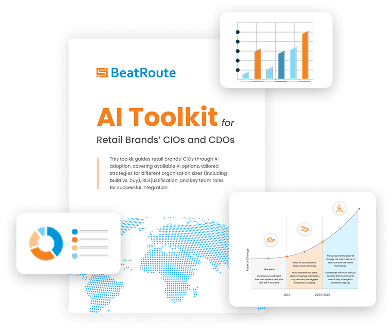Sales Performance Analysis Made Simple | Proven Strategies

For any sales manager in Nigeria, mastering sales performance analysis can feel like an impossible task. You know it’s the key to hitting your targets, but the daily reality gets in the way: the go-slow in Lagos, unpredictable distributors in Aba, and the constant pressure to maintain visibility in bustling open markets. You’re often left flying blind, forced to rely on gut feelings instead of hard data.
This guide is designed to change that. We’ll show you how to move beyond the chaos and use smart, data-driven strategies to get a true picture of your team’s performance, make faster decisions, and ultimately, win in your market. 🇳🇬
What Is Sales Performance Analysis?
Sales performance analysis is the process of measuring, evaluating, and managing how effective your sales plan, teams, and activities are.
But for a field sales team in Nigeria, it’s not about staring at stale spreadsheets. It’s about using modern tools to understand why one territory is crushing its targets while another struggles. It’s about knowing why a product isn’t moving in Kano despite selling out in Port Harcourt. It’s about connecting your team’s daily hustle to your bottom line.
Why Sales Performance Analysis Matters
Ignoring proper sales analysis is like trying to drive from Lagos to Abuja without a map. You might get there, but it will be slow, expensive, and stressful. Here’s why getting it right matters:
- Get Clarity on What Actually Works: Pinpoint which sales reps are champions at managing their work, which products resonate with modern trade vs. general trade customers, and which strategies are just wasting money.
- Forecast Like a Pro: Stop guessing. Use historical data to predict sales trends for peak seasons like Christmas or Sallah, manage inventory with your distributors, and avoid costly stockouts that hand sales to your competitors.
- Boost Team Motivation & Accountability: When metrics are transparent on a real-time dashboard, you create a culture of healthy competition. Reps can see how they stack up, and you can reward your top performers fairly.
- Make Decisions Today, Not Next Month: Real-time insights mean you can react instantly. Did a competitor launch a promotion? Is a distributor underperforming? You can address problems this morning, not in a quarterly review.
How do you measure sales performance?
To make smarter decisions, your field sales teams should focus on a handful of critical sales analysis metrics that directly impact your bottom line.
- Time Saved Per Sales Rep: Streamlined workflows and optimized routes help reps maximize selling time and reduce wasted hours.
- Customer Interactions and Coverage: Effective sales tracking tools ensure every visit, call, and follow-up is captured, no opportunity is missed.
- Missed Follow-Ups: Automated reminders and sales automation help close more deals by minimizing missed actions.
- Data Accuracy and Completeness: Real-time sales reporting tools make data analysis more reliable and decisions more effective.
- Revenue and Conversion Rate Improvement: The ultimate measures of whether your sales strategies are driving true growth.
- Order Value and Product Mix: Tracking what’s selling and where reveals trends and opportunities.
- Lead Response Time: Faster responses often result in higher conversion rates.
- Customer Retention: Loyal customers boost lifetime value and provide valuable referrals.
- Field Visit Effectiveness: Comparing planned vs. actual visits shows efficiency and discipline.
When these KPIs are consistently tracked and acted upon, organizations gain an actionable view for every manager, rep, and executive.
Step-by-Step: How to Analyze Sales Performance
1. Gather Accurate Data
The foundation of any sales effectiveness analysis is timely, accurate data. Automating data capture from every field visit, order, and customer interaction eliminates manual errors and delays, providing the basis for reliable analysis.
How to Collect Better Sales Data:
- Use mobile-first apps for real-time reporting.
- Standardize data entry fields and validation to prevent errors.
- Integrate all data sources (orders, visits, CRM, feedback) in one platform.
- Encourage reps to add qualitative notes or images for richer insights.
2. Segment and Visualize Your Data
To truly improve sales, analyze performance by territory, product, sales rep, and even by route. Segmenting your data helps you identify strengths, spot gaps, and focus coaching or resources where they’ll have the biggest impact. Dashboards and clear visualizations allow managers and sales reps to quickly compare results and make informed decisions.
For teams seeking to simplify and accelerate this process, solutions like BeatRoute offer dynamic dashboards specifically designed for field sales, enabling actionable insights with just a few clicks.
Ways to Segment Sales Data:
- By geography (region, city, route)
- By customer type or channel (modern trade, general trade, institutions)
- By product or SKU
- By rep, team, or distributor
Visualizing Data:
- Use maps, bar charts, and leaderboards for easy comparison.
- Set up automated reports that highlight exceptions or trends.
- Drill down from summary to detailed views for root cause analysis.
3. Identify Trends, Patterns, and Outliers
Great sales performance management means keeping an eye on trends over time, identifying top performers, and spotting unusual results that may signal risks or opportunities. Visual dashboards and automated alerts can greatly reduce the manual effort required, helping managers respond quickly and effectively.
Example Patterns to Look For:
- Reps who consistently exceed or miss targets
- Products with declining or spiking sales
- Regions with lower visit frequency or conversion
- Outliers like “one big order” or repeated stockouts
4. Root Cause Analysis
Beyond tracking results, top-performing sales teams always dig into the “why” behind the numbers. Connecting sales data to inventory issues, local competition, or field feedback allows you to uncover the real factors driving performance. When context like field photos or rep comments is captured alongside your analytics, your improvement strategies become much more targeted and effective.
Tips for Better Root Cause Analysis:
- Use rep feedback forms and customer visit notes
- Match sales dips to out-of-stock events or route disruptions
- Analyze timing of promotions, holidays, or competitor launches
- Encourage field reps to share “what worked” stories
5. Take Action & Track Impact
Once you’ve found opportunities for improvement, set clear goals, coach your team, and monitor progress over time. Plan-vs-actual dashboards and smart tracking tools ensure every initiative is followed through.
How to Track Impact:
- Define KPIs and targets for each initiative
- Assign responsibility and timelines
- Monitor progress weekly with team reviews
- Use dashboards to see plan-vs-actual at a glance
- Celebrate wins and share learnings
Advanced Tips: Using Sales Analytics for Strategy and Growth
- Predictive Analytics: Use past sales and field data to forecast future trends and set more accurate targets.
- Territory Optimization: Analyze sales density and customer locations to adjust rep territories for better coverage and efficiency.
- Customer Segmentation: Identify high-potential accounts vs. low-value or at-risk customers and personalize your approach.
- Sales Gamification: Leverage leaderboards and rewards to keep your sales force engaged and motivated.
- Integration with Other Systems: Combine sales analytics with inventory, marketing, or finance systems for 360° business insights.
Best Practices for Sales Performance Analysis
- Continuous Review: Regularly review sales reports and update your sales plan as markets change.
- Digital Adoption: Use intuitive sales tracking tools to ensure reliable, real-time data input from the field.
- Transparent Performance Management: Real-time dashboards and leaderboards keep teams focused and accountable.
- Connect Insights to Action: Use analytics to drive targeted coaching, incentives, and improvement strategies.
- Regular Training: Upskill your field teams in using analytics tools and interpreting sales data.
- Feedback Loops: Create easy ways for reps to share field insights and feedback with managers.
Adopting an all-in-one platform can make these best practices far easier to implement and sustain, especially for distributed teams in complex markets.
Common Mistakes to Avoid in Sales Performance Analysis
Many organizations struggle to get value from their data because they fall into these common traps.
- Relying on manual reporting, which is slow and error-prone.
- Focusing on vanity metrics that don’t drive real sales outcomes.
- Ignoring root causes by not connecting data to field realities.
- Lack of feedback loops, make it easy for field reps to share on-the-ground insights and feedback with managers.
- Delayed Response: Waiting for monthly or quarterly reviews rather than acting on real-time data.
- One-Size-Fits-All KPIs: Not customizing metrics to each territory, team, or product.
Sales Performance Analytics Tools: What to Look For
For teams in Nigeria, the right tool must be built to handle the unique realities of the local market.
- Mobile-first design for easy field reporting
- Customizable dashboards with drill-down capability
- Automated alerts and reminders
- Integration with CRM/ERP systems
- Offline functionality for teams in low-connectivity regions
- User-friendly UI/UX
- Real-time syncing for instant updates
For African and emerging markets, ensure your tool can handle the realities of local infrastructure and diverse field conditions. BeatRoute, for example, is designed for these markets with proven adoption in Nigeria and India.
How BeatRoute Stands Out
For African and emerging markets, BeatRoute is designed to handle the realities of local infrastructure and diverse field conditions with proven adoption in Nigeria.
- Mobile-first design: BeatRoute ensures your field teams can easily report and manage tasks directly from their smartphones, streamlining operations wherever they are.
- Customizable dashboards: Drill down into sales data and performance metrics with BeatRoute’s flexible dashboards tailored to your business needs.
- Automated alerts and reminders: BeatRoute keeps your team on track with intelligent, automated notifications so nothing slips through the cracks.
- Seamless CRM/ERP integration: Easily connect BeatRoute with your existing systems for smooth, unified data management across your organization.
- Offline functionality: BeatRoute supports your teams even in regions with low or unreliable connectivity, so productivity never stops.
- User-friendly UI/UX: With BeatRoute’s intuitive interface, adoption is quick and effortless for all team members.
- Real-time syncing: Instantly sync field activities and updates for faster, informed decision-making.
- Built for emerging markets: Specifically designed to overcome infrastructure and field challenges common in Africa, India, and similar regions, BeatRoute is proven and trusted where it matters most.
- Copilot-Kopilot BeatRoute helps in sales performance analysis by acting as a conversational AI agent that enables proactive problem-solving. It allows sales managers and reps to ask natural language questions, such as which stores haven’t ordered recently, and it provides instant answers with graphs, tables, and summaries.
Kesimpulan
Sales performance analysis is much more than a reporting task, it’s your competitive advantage. With a solid process, the right metrics, and supportive technology, field sales teams in Africa and beyond can transform execution, strengthen sales strategies, and drive ongoing growth.
If your team is exploring solutions to streamline analytics, tracking, and coaching across distributed field sales forces, platforms like BeatRoute are built with these challenges in mind, trusted by leaders in emerging markets for actionable, real-time insights.
Ready to see how advanced sales performance analytics can help your team win?
Minta Demo Gratis and experience the BeatRoute difference.
Pertanyaan Umum
Which sales analytics tools work best for Nigerian businesses?
The best sales analytics tools for Nigerian businesses are mobile-first, offline-ready, and built for distributor management. BeatRoute stands out with mobile-first reporting, offline data capture, and real-time dashboards. With AI-driven Copilot, sales managers can ask natural questions and instantly get actionable insights.
How do I analyze sales data with limited technical skills?
You don’t need technical skills to analyze sales data. In Nigeria and other African markets, BeatRoute simplifies performance analysis with mobile-first reporting, easy dashboards, and AI-driven Copilot that answers natural questions like “which outlets haven’t ordered recently” with instant, visual insights.
How do I identify why my sales team is underperforming?
You can identify why your sales team is underperforming by analyzing sales data, field visit effectiveness, and missed opportunities. Tools like BeatRoute simplify this with mobile-first reporting, real-time dashboards, and AI Copilot that pinpoints gaps in outlet coverage, distributor performance, or sales execution.
Tentang Penulis
-
Kanika Agrawal owns deep first-hand market experience ranging from global corporations to startups, where she has contributed to building and scaling solutions that drive measurable business impact. She possesses strong expertise in AI and focuses on translating its capabilities into real business value.
Gunakan Goal-Driven AI untuk Mencapai Peningkatan Penjualan Ritel, Hari Ini!
Bergabunglah dengan perusahaan di lebih dari 20 negara yang mempercayai BeatRoute, platform AI yang dominan secara global untuk otomatisasi tenaga penjualan, penjualan lapangan, DMS, dan eB2B
Wawasan & Artikel Terbaru
Berikut ini adalah artikel, pembaruan platform, ebook, dan laporan yang paling berpengaruh untuk Anda.


